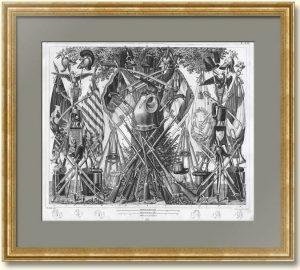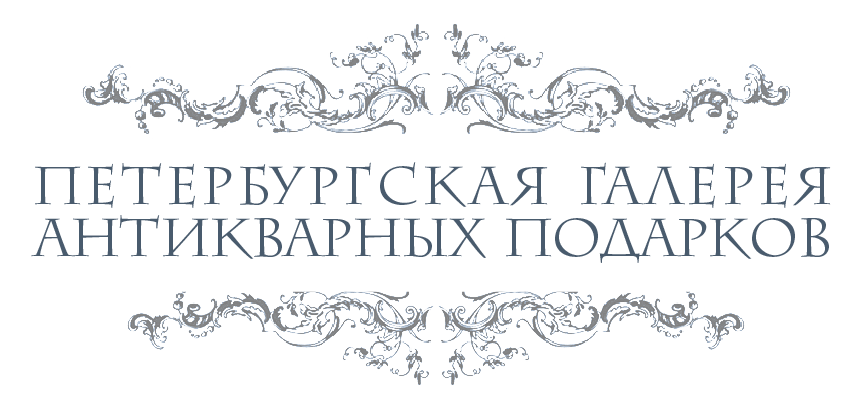…
Военная атрибутика и оружие европейских армий середины XIX века
Отличная сохранность. Тщательная прорисовка всех деталей, для полного представления о размерах под декоративной рамкой размещен масштаб.
Старинные гравюры с видами военной формы всегда считались одним из лучших украшений для интерьера кабинета и гостиных.
Иоанн Георг Хек (Johann Georg Heck, 1795 in Straßburg; † 20. November 1857 in Leipzig) – иллюстратор справочников по истории, математике, технике и пр. Наиболее известная работа: “Иллюстрированная Энциклопедия наук, литературы и искусства (Encyclopaedia of Science, Literature and Art). Энциклопедия была выпущена вначале в Германии, а затем переиздана в Америке.
Генри Винкльз (1801—1860) — английский гравер и мастер архитектурной иллюстрации. Совместно с Карлом Людвигом Фроммелем (Karl Ludwig Frommel, 1789–1863) основал известную студию стальной гравюры в Карлсруэ.
Пояснения к изображенным на гравюре воинским атрибутам:
Fig. 1. Cutting weapons : a, cavalry swords; fig. 18a, French heavy cavalry sword, pattern of 1803, with iron scabbard ; the blade (fig. 18b) has two grooves, 18c. Hilt and basket from above, 19a. French heavy cavalry sword pattern of 1816, 19b. blade 19c. double gutter 20a. French heavy cavalry sword, pattern of 1832, 20b. blade, slightly curved, 20c. basket 22a. French light cavalry saber, pattern of 1816, 22b. iron scabbard, blade is strongly curved backwards, 22c. hilt, 23a. same saber, pattern of 1822, 23b. strongly curved blade, 23c. hilt 24,25. officers’ sabers 15. common infantry saber 17. French two-edged infantry sword 16a. French artillery saber, 16b. blade 26. French army yatagan, Algerian expedition. 2. Thrusting weapons, a. The lance. 13. French lance, pattern of 1812, 14. improved pattern of 1823 b. The bayonet. The most ancient form of this (fig. 5) is merely a lance-head, 6. bayonet with curved neck and three-sided, reed-shaped blade 7. modern bayonet 11. bayonet for the percussion-musket 12. two bayonets of different forms. 3. Projectile weapons, a. Muskets. Fig. 1. common infantry musket with flint lock 8. percussion-musket 9. larger kind of percussion arm is the wall-piece 2. French shorter musket, 3. cavalry carbine with flint locks. 9b. light infantry grooved rifles 4ab. old cavalry pistol 10. modern is short-stocked with longer in barrel.
4Defensive arms. 27. cuirass, head coverings 30. Prussian Garde du Corps, 29. Cuirassiers of the Guard, 32. Dragoon Guard, 41. Line Infantry, French 28. Cuirassiers, 31. Carbiniers, b. Shakos, 33. French Hussars, 37. Chasseurs, 38. Artillery, 39. Line Infantry, 40. African Light Infantry, 35. Prussian Hussar cap 5. Knapsacks and Belts. 42. French Line Infantry, 43. Prussian Infantry, 45. Prussian Artillery, 44. Prussian Pioneers, 60. cartridge-box of the French Light Cavalry (right side) and the baldric and shoulder-belt of the French Light Infantry (left side). fig. 34. sabretache of the French, fig. 36, of the Prussian Hussars. 6. Drums and Music. Figs. 46 and 47 are field-drums with brass shells and wooden hoops, 48 and 49 are cavalry trumpets, 50 a bugle-horn, fig. 51 a trombone. 7. Colors and Standards. Fig. 52. French eagle, as it was in the time of the Emperor, 53. Prussian eagle, 57. color of the German Empire, of black, red, and yellow, cross striped, and with the black eagle of the empire in a yellow field in the center. 55. German imperial standard, in black, red, and yellow, cross striped: both are trimmed with gold fringe and have cords and tassels of black, red, and gold, 56. French color, blue, white, and red, striped perpendicularly, with blue, white, and red bands and gold fringe. Instead of a head the Gallic cock in gold is placed on the top of the staff. 54. French standard, precisely the same, only smaller, 58. English color, is of white silk, and has usually on one side the arms of England and the Star of the Garter, and on the other a laurel wreath.




